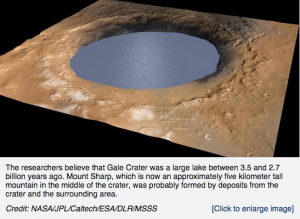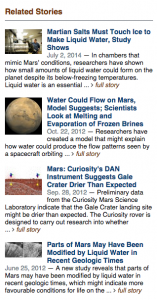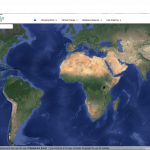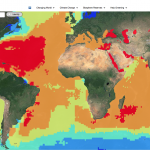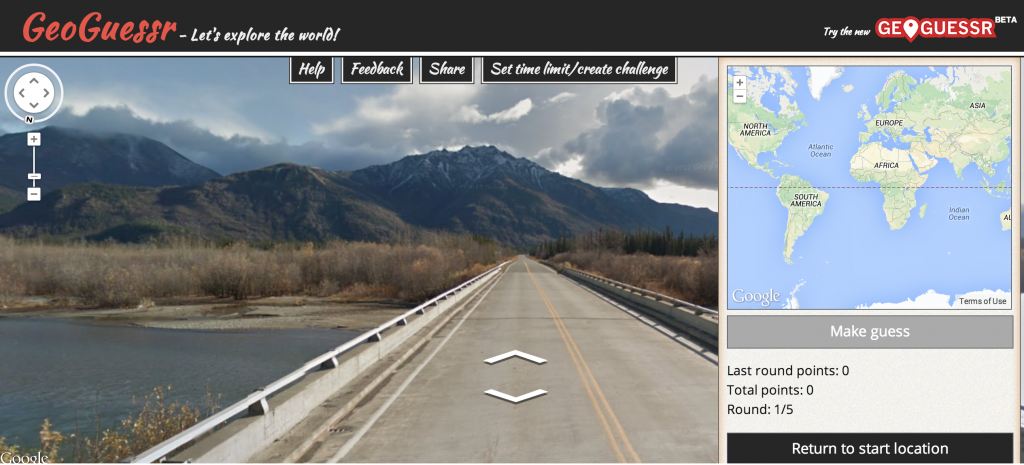ScienceDaily is one of the most popular scientific websites. About 5,000,000 people visit this website monthly. One of the reasons that people prefer this website for their scientific research is that it is well organized and easy to search for topics that they want. The site has five big categories on the top: Health, Physical/Tech, Environment, Society/Education, and Quirky. There are more specified categories below these five categories like Space and Matters, Animals and Plants.
For example, if you are looking for a resource about Mars, you will go to Physical/Tech, Space and Matters, and click Mars. There is a research about Marsh might has a salty water. It provides summary of the news and information about the laboratory where the research was done. You will see the recent researches about Mars and the related stories additionally on the right side. In addition, “Related stories” section that recommends further research is shown based on your search topic. It helps you to gather more related information about the topic and to develop your study once you search, so that you do not have to search several times.
The website is designed well for the young people who are interested in scientific issues. It has a Facebook page, Twitter, and Google+ so that you can get the latest news through them. And the website allows you to share the news on Facebook, Twitter, and Google+ simply clicking “Share this”.
The website is useful for our course, Geography 250 because it has great amount of resources about physical geography including Atmospheric, Biospheric, Hydrospheric, and Lithospheric news. In Space & Time section, there are detailed resources about space that can be linked with what we learned in chapter 3, the atmospheric composition. The earthquake news of the website announces a recent issue about the earthquake like Japan Quake and Tsunami Spurred Global Warming which can be associated with Chapter 12.

